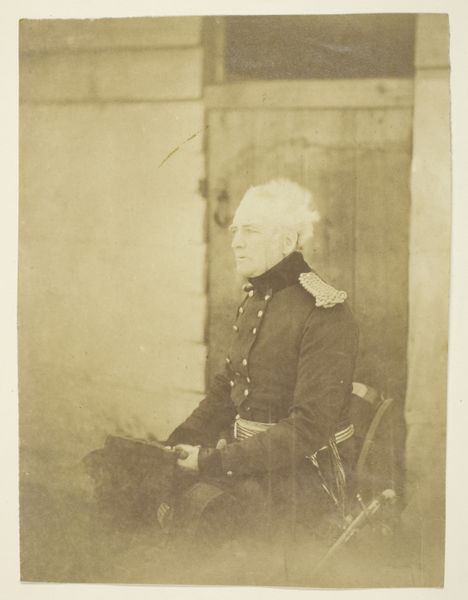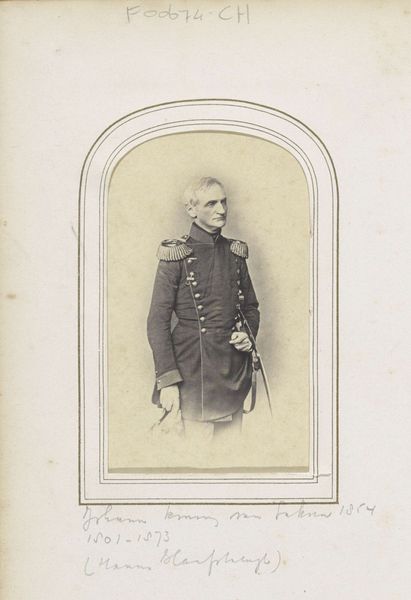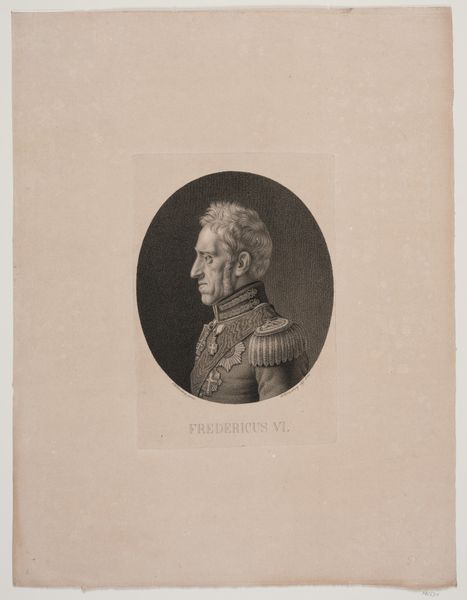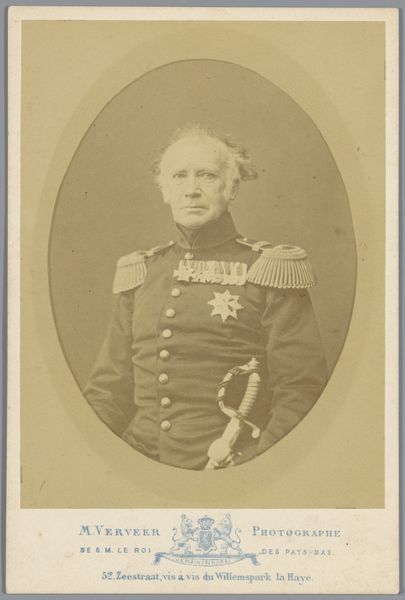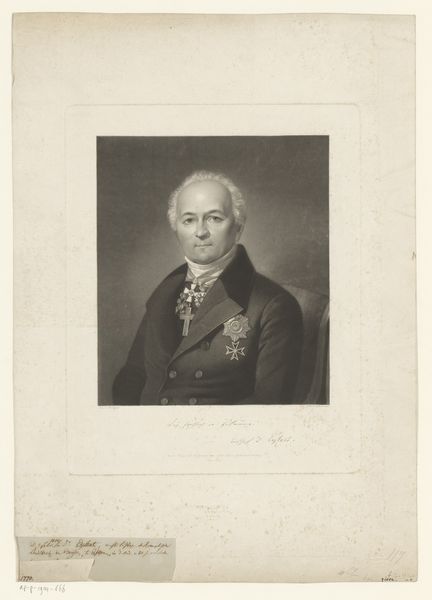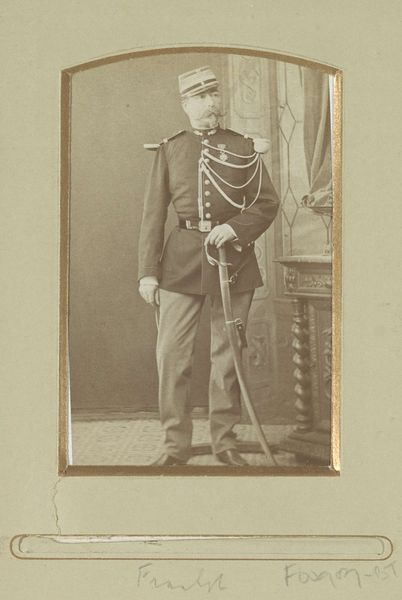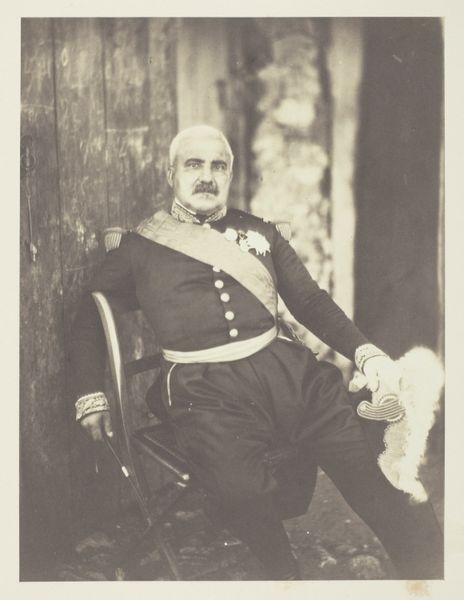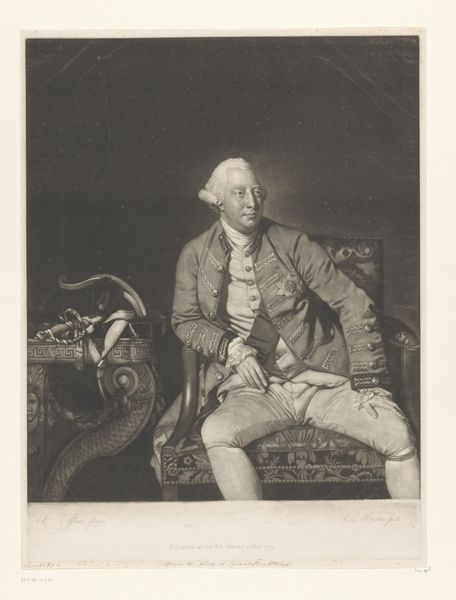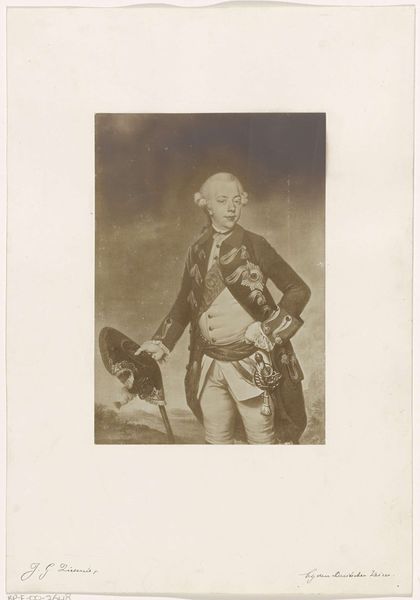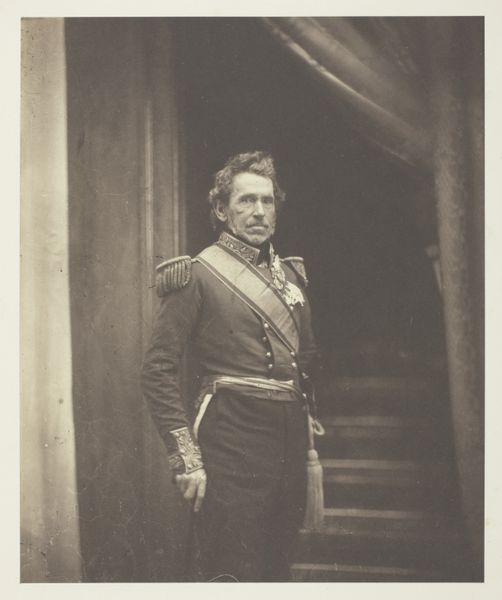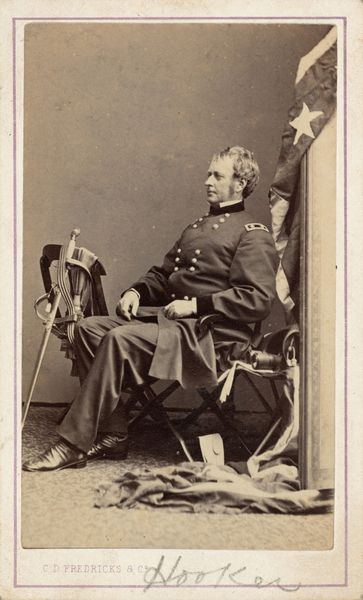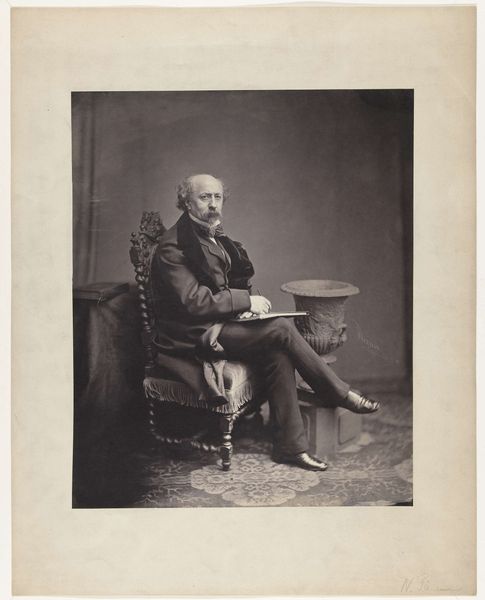
print, daguerreotype, paper, photography, gelatin-silver-print
#
portrait
#
print photography
#
16_19th-century
#
self-portrait
# print
#
war
#
daguerreotype
#
paper
#
archive photography
#
photography
#
gelatin-silver-print
#
realism
Dimensions: 16.5 × 15.4 cm (image/paper); 58.9 × 42.5 cm (mount)
Copyright: Public Domain
Editor: So, here we have Roger Fenton's "Lieutenant General Sir George Brown, G.C.B.," a gelatin silver print from 1855. It’s a compelling portrait, almost severe in its stillness, but the light gives it a kind of quiet dignity. What strikes you about it? Curator: What immediately grabs my attention is the photographic process itself, right? This isn't just an image; it's a product of very specific material conditions and labor. Think about the wet plate collodion process Fenton was using at this time. The sheer difficulty involved in creating this image— coating the glass plate, exposing it while still wet, developing it immediately—highlights the intense labor that underpins this seemingly simple portrait. And how that labour interacts with this man's position within the social hierarchy. Editor: That's fascinating! I hadn't really considered the physical effort involved. How does that affect our interpretation? Curator: Well, the materiality pushes us to consider photography as a form of production, almost industrial, even in its early stages. Fenton's work here exists because of the materials at hand: the glass, the silver, the chemicals, and the access to a darkroom to manipulate them effectively and safely. It makes us consider who has access to these materials and knowledge and why. Do you think that it's interesting that Fenton was employed by the British Museum at some points of his career, giving the instutition photographic reproduction rights of their collection of artwork? Editor: Wow. That gives a new dimension. The photograph isn’t just about Sir George; it's about the whole network of production. What was needed, how, where. Thanks for making that clearer. Curator: Exactly. Seeing it this way lets us consider how early photography was always interwoven with social and economic forces. It pushes the limits of traditional understandings of "art". Editor: That's something to think about. It ties it to something bigger than just an individual image.
Comments
No comments
Be the first to comment and join the conversation on the ultimate creative platform.
